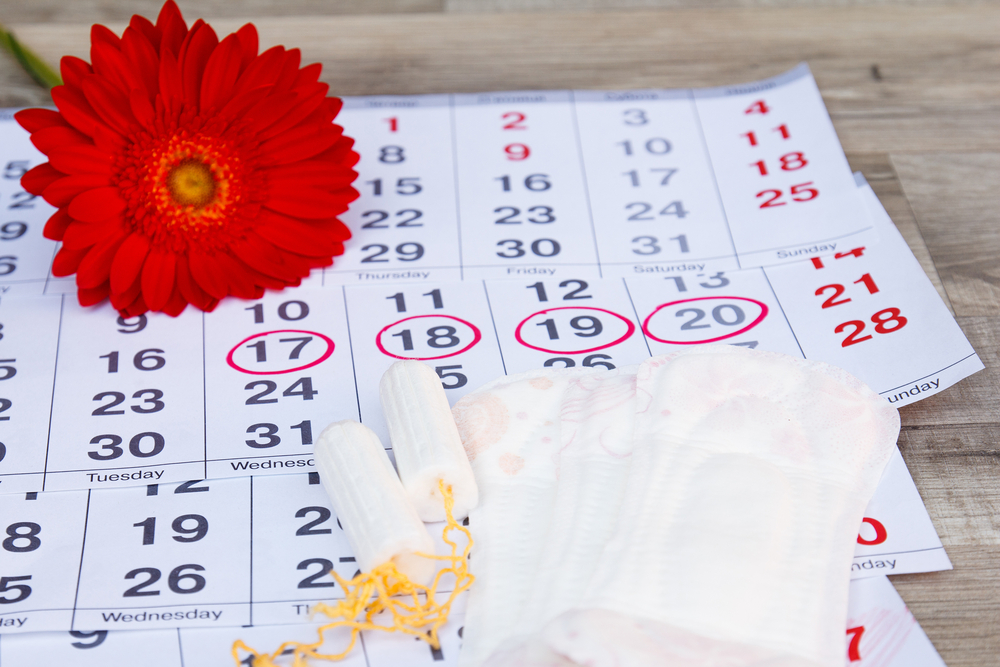
What is menstruation?
The woman’s monthly bleeding is called menstruation. During this period, the body sheds the lining of the uterus (womb). Menstrual blood flows from the uterus through the small opening in the cervix and passes out of the body through the vagina. Menstrual periods usually last from 3 to 5 days.
What is the menstrual cycle?
Regular menstruations form the menstrual cycle. Having a regular menstrual cycle is a sign that important parts of your body are working normally. This process provides important body chemicals called hormones. It also prepares your body for pregnancy each month. The average menstrual cycle is 28 days long, although some range from 21 to 35 days in adults and 21 to 45 days in young teens.
The rise and fall of levels of hormones during the month control the menstrual cycle.
What happens during the menstrual cycle?
Estrogen rises in the first half of the cycle. This female hormone plays an important role in keeping you healthy. It helps you to build strong bones and keep them strong as you get older. Estrogen also makes the lining of the uterus (womb) grow and thicken. The embryo will be nourish in the lining of the womb. At about day 14 of an average 28-day cycle, the matured egg leaves the ovary. This is called ovulation.
The egg travels through the fallopian tube to the uterus. Hormone levels rise and help prepare the uterine lining for pregnancy. A woman becomes pregnant if the egg is fertilized by a man’s sperm cell. Fertilized egg will then attach to the uterine wall. If the egg is not fertilized, it will break apart and hormone levels drop. The thickened lining of the uterus is shed during the menstrual period.
What kinds of problems do women have with their periods?
Period in woman may have a range of problems, including pain, heavy bleeding, and skipped periods.
Causes can include:
Regular menstrual cycles indicate that important parts of your body are working normally. In some cases, not having menstrual periods can mean that your ovaries have stopped producing normal amounts of estrogen. The lack of this female hormone may lead to hormonal problems, such as those caused by polycystic ovary syndrome (PCOS) or serious problems with the reproductive organs. Talk to a doctor if you have this problem.
If none of these works and the pain started to interfere with your daily activities, you should see a doctor. Treatment depends on what’s causing the problem and how severe it is.
This condition has many causes. Some of them are not serious and are easy to treat. Others can be more serious. Treatment for abnormal bleeding depends on the cause. For women nearing menopause, hormonal changes can cause long periods along with irregular cycles. Abnormalities with your menstrual cycle brought by the changes in hormones can be treated. It is important to see your doctor if you have any abnormal bleeding.
What is menopause?
Menopause occurs between the ages of 45 and 55, usually around age 50. This means that a woman is no longer ovulating (producing eggs) or having periods therefore she can no longer get pregnant. Like menstruation, menopause can vary from woman to woman and these changes may occur over several years.
Menopausal transition is the time when your body begins its move into menopause. This can last anywhere from 2 to 8 years. In some cases, menopause happens earlier because of surgery or other treatment, illness, or other reasons. See a doctor if you don’t have a period for 90 days to whether you are pregnant or have health problems.
Overview and FactsTypes and SymptomsDiagnosis & MedicationsOverview and Facts Acute glomerulonephritis (AGN) is a medical condition characterized by inflammation of [...]
Overview and FactsTypes and SymptomsDiagnosis & MedicationsOverview and Facts Blue baby syndrome (cyanotic heart disease) is a group of congenital [...]
Overview and FactsTypes and SymptomsDiagnosis & MedicationsOverview and Facts Basilar artery migraine, also known as basilar migraine, is a subtype [...]